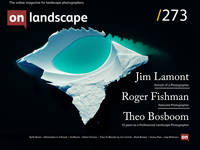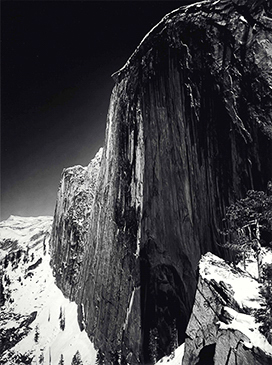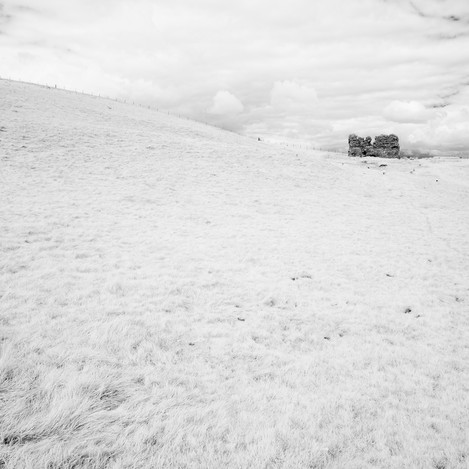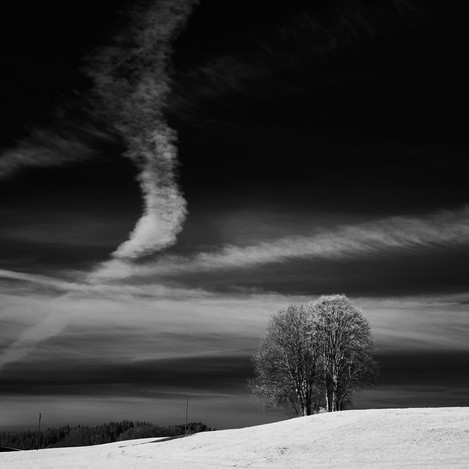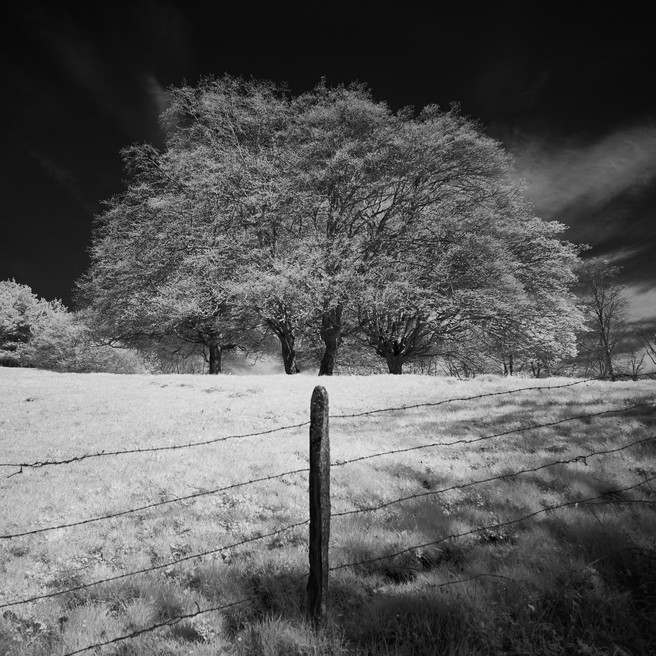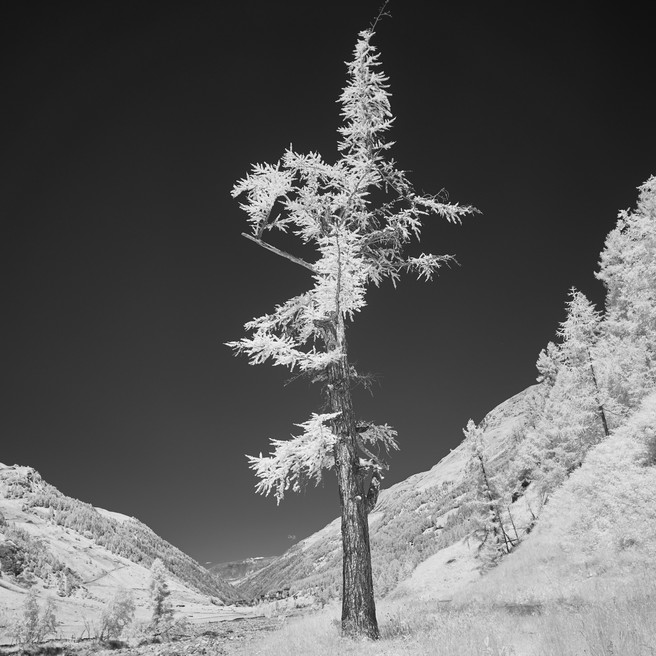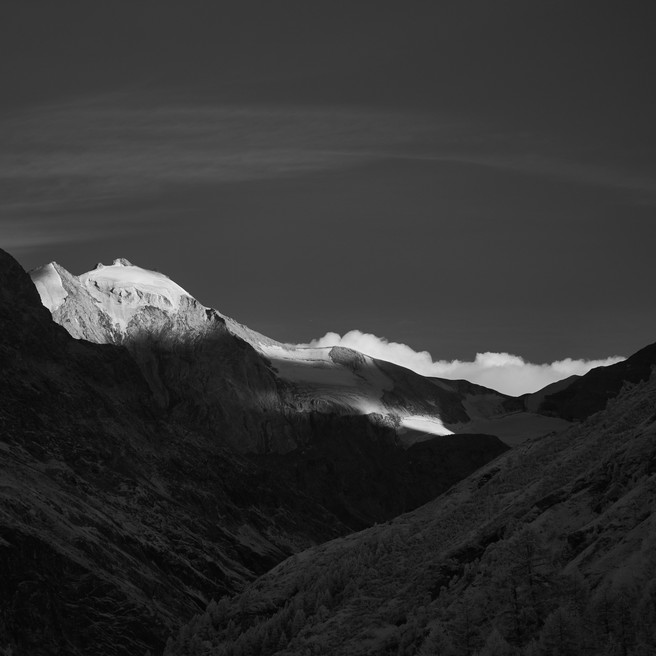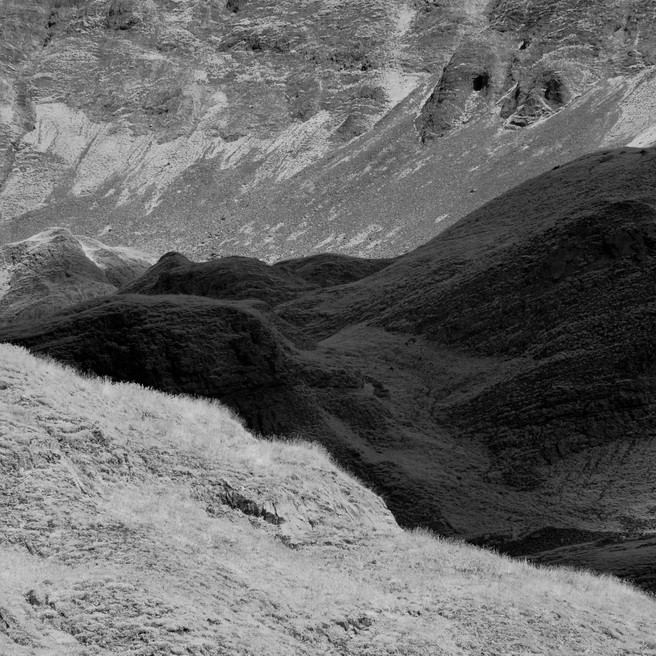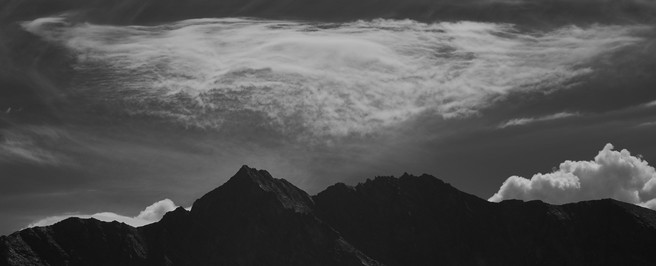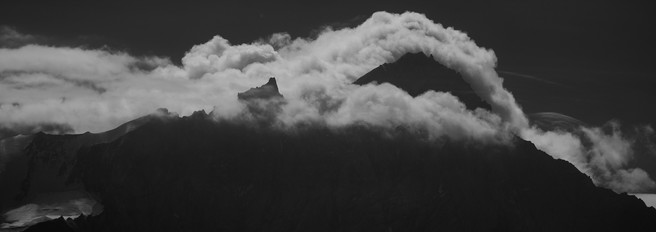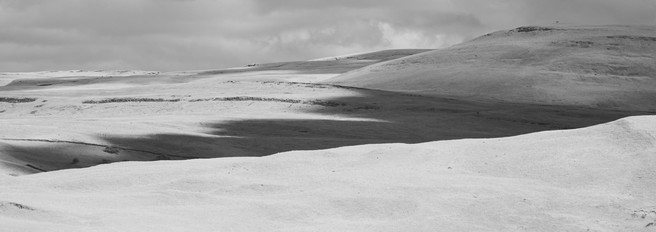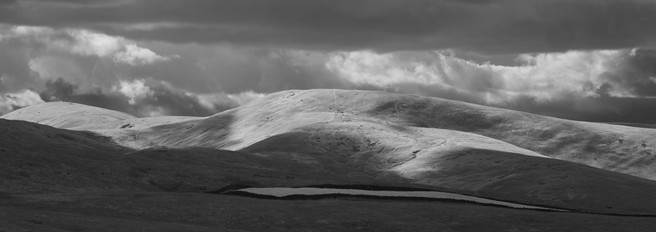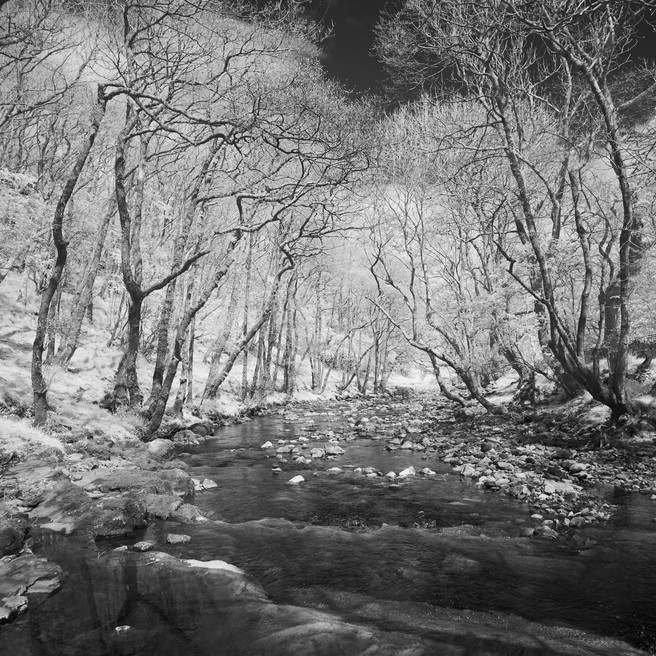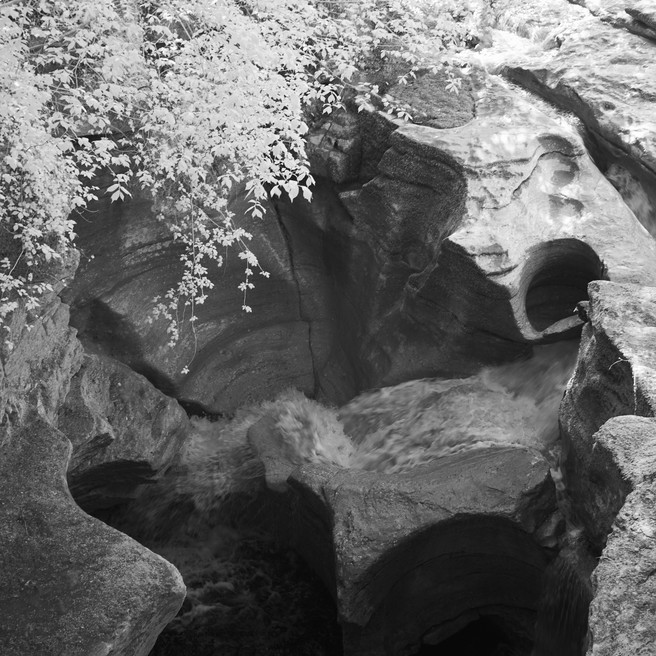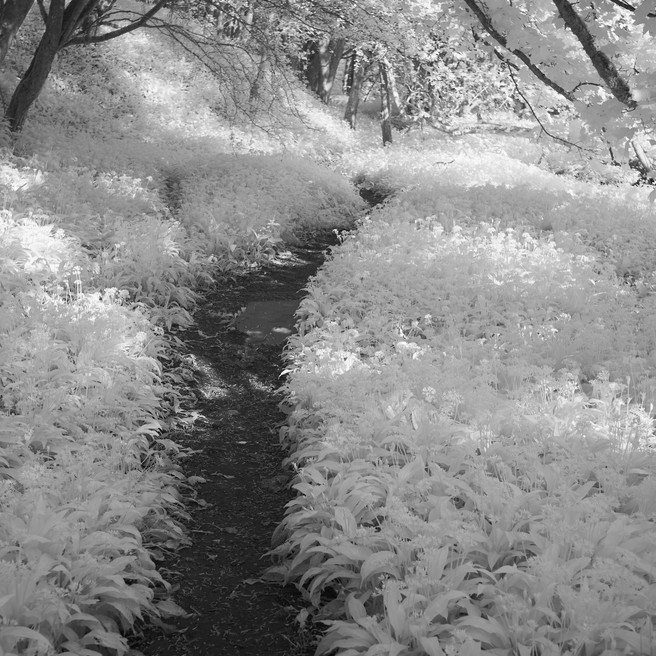Taking advantage of the unnatural

Keith Beven
Keith Beven is Emeritus Professor of Hydrology at Lancaster University where he has worked for over 30 years. He has published many academic papers and books on the study and computer modelling of hydrological processes. Since the 1990s he has used mostly 120 film cameras, from 6x6 to 6x17, and more recently Fuji X cameras when travelling light. He has recently produced a second book of images of water called “Panta Rhei – Everything Flows” in support of the charity WaterAid that can be ordered from his website.
The pages of On Landscape have seen, in both articles and comments, continuing discussions about the “natural” and the expressive and creative use of image modifications in producing images1. Those modifications might range from the choice of medium (paper, film or digital of different types) to extreme post-processing techniques (either in the darkroom or on the computer). Some of the most “unnatural” landscape photographs are also the oldest, when the photographer had no choice but to produce images in monochrome. Even after the arrival of colour photography, many photographers continued to work in monochrome for expressive effect, but also because of their knowledge and understanding of the black and white medium and processes, such as Ansel Adams (1902-1984) and the zone system for controlling exposures and contrast.
A good example of this is his story of the origins of visualising the final print in making the negative when he made the image Monolith – The face of Half Dome in 19272. Initially, he made a monochrome exposure with a yellow filter (on a 6 ½” x 8 ½” Korona view camera that he had hauled up to a rock slab called The Diving Board), then.
As I replaced the slide, I began to think about how the print was to appear, and if it would transmit any of the feeling of the monumental shape before me in terms of its expressive-emotional quality. I began to see in my mind’s eye the finished print I desired: the brooding cliff with a dark sky and the sharp rendition of distant, snowy Tenaya Peak.
To do so, for his last sheet of film, he used a dark red filter to darken the sky even further, and, having examined the developed negative, reported that
I had achieved my first true visualization! I had been able to realize a desired image: not the way the subject appeared in reality but how it felt to me and how it must appear in the finished print. The sky had actually been a light, slightly hazy blue and the sunlit areas of Half Dome were moderately dark gray in value. The red filter dramatically darkened the sky and the shadows on the great cliff. Luckily I had with me the filter that made my visualized image possible.3
Monolith – The face of Half Dome is one of Adam’s most famous images because of its link to the concept of what is now often called pre-visualisation, but in its processing (including the later printing in the darkroom) it is certainly unnatural in its treatment of the tones but perfectly acceptable to the viewer in giving an impression of the contrast of a clear blue sky and the light greys of the lit cliff face of Half Dome.
Using a red filter, of course, allows only the longer wavelengths of light to be recorded. Blues are filtered out, hence the dark sky. This can be taken further by using a sensor that is sensitive to infrared light and using a filter that passes only infrared wavelengths. The first published infrared landscape photographs were produced by Robert Williams Wood (1868-1955) in 19104. There was a Royal Photographic Society celebration of the centenary of infrared photography in volume 150 of the RPS Journal in 20105. These first infrared images were produced using an experimental emulsion that required very long exposures, but by the 1930s, all the major film companies (Ilford, Kodak and Agfa) were producing films sensitive to infrared wavelengths. These were still, however, also sensitive to some visible light wavelengths, so were normally used with a low pass filter to cut out shorter wavelengths. The most common filter used was at 720nm (89B, R72), but 695nm and the more extreme 830nm were also used. I have many images taken on Ilford SFX film using a R72 filter. This requires an exposure adjustment of about 4 stops and therefore needs longer shutter speeds (hence the blurred clouds or waves that were common in many infrared images taken on film). It also requires an adjustment to the focus since lenses will focus infrared light to a different plane than visible light. Many film-era camera lenses had red marks on the focusing ring to indicate the adjustment needed for infrared film (something it was all to easy to forget when only using infrared occasionally!).
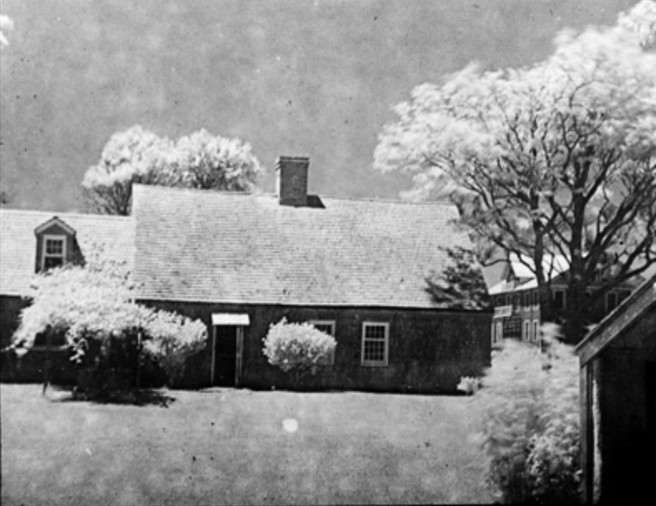
One of the first infrared photographs was taken by Robert Williams wood in about 1908 of his summerhouse in East Hampton. This seems to pre-date the version published in the Century Illustrated Monthly Magazine in 1910. Wood later published more infrared images taken in Italy in the Illustrated London News in 19116.
There are still some infrared films in production7, but there are also digital alternatives, including cameras developed specifically for infrared use (such as those used in assessing heat loss from homes and, for scientific purposes, the temperatures of volcanic lavas). Most digital camera sensors are sensitive to infrared wavelengths but are covered by a cut-off filter that does not pass those wavelengths. This means that to record infrared a conversion is needed to remove that filter and fit either a clear all-frequency filter (which would then require an infrared filter on the lens as for film), or a replacement internal filter at 695, 720 or 830nm. A number of companies in the UK provide such a service for different makes of cameras. Some of the Sigma cameras with Foveon sensors were designed with IR cut filters that could be removed quite easily8. The 3 layer Foveon sensors also avoided the softening effects of the Bayer array or Xtrans filters that still cover the sensors of other digital cameras after the infrared cut-off filter is removed. The autofocus on digital cameras still works in infrared when the focus is detected on-sensor or via the EVF, while modern lenses with APO elements reduce the focussing issue even more.
The high contrast effects of monochrome infrared images can often be used quite effectively to augment the minimalist feel of landscape photographs. There have been a number of celebrated landscape photographers who have worked in such a monochrome minimalist tradition but without using infrared film or sensors, most notably perhaps Michael Kenna and Hiroshi Sugimoto10. Since the availability of conversion services for digital cameras, both monochrome and colour infrared images have become much more commonly posted on the internet11. To my mind, they work best in monochrome; the false colours of colour infrared come across much more as just false (albeit that they have important scientific uses in remote sensing and astronomy, while judging by their ubiquity on the internet, clearly appeal to some photographers at least as experiments).
So for those readers who might want to think about giving film or digital infrared a try, then some recent infrared images follow, some in the minimalist tradition. For those who still have a film camera, that may be the cheapest way to start – you need only a roll of film and a low pass infrared filter12. If you happen to have a spare digital camera, then it may also be possible to get a conversion made for the order of £25013. Not all lenses give good results with infrared – some will produce a diffuse bright hot spot in the centre of the image, especially at smaller apertures14. The images that follow have been taken with a converted Fujifilm X-E2 camera with a replacement 720nm low pass filter. Some show the more muted range of tones preferred by Paul Gallagher; some the more extreme range of high-key and-low key elements, including the dark skies, that are possible in sunny conditions (when care must be taken to expose for the right of the histogram and not burn out the highlights – or at least not too much). The advantage of having such a camera is that it can provide an alternative view of the world; the disadvantage of course is that it is yet more weight to carry when walking!
The ready availability of infrared film and cameras also raises a question about how far the unnatural can be acceptable in making creative images. That question has been at the heart of some of the recent philosophical discussions in On Landscape15 and in setting up the Natural Landscape Photographer Awards16 (NPLA). Clearly, we are not going to prevent photographers and artists from using the full range of sensors and digital processing techniques that are available, in the same way that some still choose to use 19th Century alternative processes. Thinking about this issue suggested to me that a possible philosophy here is that of the philosopher of science Paul Karl Feyerabend (1924-1994). Originally trained in the Vienna school, Feyerabend became somewhat of an iconoclast in the philosophy of science. His most well-known book had the title “Against Method”; his most well-known phrase “Anything goes”. His position was determinedly relativist, and he suggested that any coherent system of beliefs could be valuable to those who believed in it (we cannot know what he might have made of conspiracist memes about climate and other issues on the internet since he died before such memes became so widespread).
We can perhaps make the analogy here with the appeal of different styles of more or less natural landscape images. “Anything goes” (in terms of choice of film, filter or post-processing), but some images might appeal to us (or our group) more than others. That this social conditioning also applies in Art is demonstrated quite nicely by a recent study of the value of paintings by male and female artists that showed that historical, social conditioning still controls responses to Art, it seems, though the influence of critics and galleries and the response of collectors17. But even if this surely ought not to be the case for landscape photography today (though some examples of highly priced male photographers come to mind), we will still respond to different types of unnatural image in different personal ways.
In the case of infrared images, unnatural, of course, is only from the point of view of a human eye with its limited range of sensibilities. Other eyes (for example, bullfrogs, vampire bats and many snakes) have eyes that are sensitive to infrared wavelengths. Such images are not, therefore, unphysical; they reflect the actual infrared emissions in different parts of the image in the form of tones or colours, but by revealing the infrared, they just provide a quite different aesthetic feel to an image in terms of tones and textures. In that sense, they might be considered more naturally unnatural than the monochrome representation of the visible spectrum, including the example of Monolith - the face of Half Dome above. It is just that such images are not necessarily considered unnatural since we have become used to interpreting and appreciating monochrome images from the very earliest days of photography.
Indeed, early photographic emulsions were more unnatural in that, before the development of orthochromatic emulsions, they had limited sensitivity to lower frequency wavelengths in the visible spectrum, being primarily sensitive to blues. However, we are much less used to seeing trees and grass glowing white because they have higher infrared emissions in sunlight than nearby rocks or tree trunks. Perhaps that is one reason why there have been relatively few articles containing infrared images in On Landscape. There has also been little presence in NPLA. There does not appear to be anything in the current rules barring infrared images, although in explaining the aims of NLPA, Tim Parkin stated that “the post-processing and interpretation of images [should] respect the inherent truth of the scene experienced, and photography aware viewers would not feel deceived by the end result if they were to see that original scene themselves”18. We will not see the original scene in infrared, of course, but in being aware that infrared reflects relative tones of heat emissions, we might also not be deceived by such images. We could consider that they are consistent with a pragmatic realist philosophy19.
Or perhaps the aesthetic just does not appeal to many – as Paul Gallagher suggested, the extremes of contrast under sunny conditions are just too great. Perhaps there is less scope for the creative use of metaphors or representation of emotions in infrared, but such images can, at least, cause the viewer to think a little. If that is only to realise that, oh! that is just another infrared image (even if not labelled as such), then perhaps not much is gained. But if the “unnatural” appeals as a form of abstraction from reality20, or to reveal some aspect of reality that might otherwise go unnoticed, then perhaps the possibilities are greater. That is up to the viewer to decide.
References
- See most recently https://www.onlandscape.co.uk/2022/11/need-philosophy-for-your-photography/ and the links therein.
- See the description at https://en.wikipedia.org/wiki/Monolith%2C_the_Face_of_Half_Dome
- Ansel Adams, 1985, Ansel Adams, An Autobiography, Little, Brown and Company: Boston, p. 76.
- See https://pubmed.ncbi.nlm.nih.gov/26752503/; https://en.wikipedia.org/wiki/Robert_W._Wood; and https://en.wikipedia.org/wiki/Infrared_photography. Wood also experimented with ultraviolet photography beyond the high frequency end of the visible spectrum.
- See https://archive.rps.org/archive/volume-150/755274-volume-150-page-258?q=Robert%20Wood%20infrared
- See https://www.infrared100.org/2017/04/professor-woods-slides.html
- E.g. Ilford SFX200, Rollei Superpan 200,
- These include the SD10 and SD14 SLRs and the SDQ, and SDQ-H mirrorless interchangeable lens cameras (but not the Merrill and Quattro fixed lens cameras.
- https://www.onlandscape.co.uk/2016/08/black-white-infra-red/ in Issue 120 in 2016.
- I have written before about the minimalist tradition in art and photography in Issue 180 at https://www.onlandscape.co.uk/2019/04/reflecting-on-minimalism/ . An interview with Michael Kenna was published in On Landscape Issue 151 at https://www.onlandscape.co.uk/2018/01/michael-kenna-interview/ There is also a Minimalist Photography Award competition, book and exhibition with a Landscape category (though this is differentiated from the Fine Art category) – see https://minimalistphotographyawards.com
- And in On Landscape, see, for example, the 4x4 sets of images of Churches in the Landscape by Michael Cant at https://www.onlandscape.co.uk/2019/07/churches-in-the-landscape/ in Issue 260.
- Or see the article by Dave Powell published on 35mmc.com for some experiments in converting cheap early digital cameras at https://www.35mmc.com/03/08/2022/5-largely-unknown-digital-infrared-gems-by-dave-powell/
- For example, at, Advanced camera services at https://advancedcameraservices.co.uk/acs-digital-infra-red-photography/ ; ProTech Repairs at https://www.protechrepairs.co.uk/infrared_conversion_-_filter_choices.html ; or Alan Burch at https://www.infraredcameraconversions.co.uk/
- Some guides as to the best lenses for use with infrared are available on the internet, e.g. Rob Shea’s guide to various sources and for various mounts at https://blog.robsheaphotography.com/infrared-lenses.html
- See, for example, https://www.onlandscape.co.uk/2016/07/oriental-philosophy-photography-rafael-rojas/; https://www.onlandscape.co.uk/2020/06/landscape-and-the-philosophers-of-photography/; https://www.onlandscape.co.uk/2021/07/ideas-behind-reality-photography/; https://www.onlandscape.co.uk/2022/06/transcendent-forms-and-noble-lies/; https://www.onlandscape.co.uk/2022/07/save-yourself/; https://www.onlandscape.co.uk/2022/11/need-philosophy-for-your-photography/
- https://naturallandscapeawards.com
- Reported, for example, in https://www.theguardian.com/artanddesign/2022/aug/02/painting-gender-pay-gap-recalculating-art. This revealed that prices for art by men are an average of 10 times greater than that by women, and that the value of female art can decrease if it is signed. This is despite the fact that when pieces are shown to collectors to decide whether it is by a male or female artist the correct identification rate was 50% (i.e. no better than random choice). The same was true for pieces of art generated by artificial intelligence, unless they were assigned to male or female names, in which case the male labelled works were again assigned greater value.
- See https://www.onlandscape.co.uk/2021/02/the-natural-landscape-photography-awards/. Tim has confirmed that there is no reason why infrared images should not be considerd for NLPA since they represent an obvious ‘photographic truth’ that ought not to deceive the photography aware viewer.
- See https://www.onlandscape.co.uk/2022/11/need-philosophy-for-your-photography/ again
- Though for a nice example of the use of the unnatural, see Guy Tal’s creative use of negative images in https://www.onlandscape.co.uk/2022/06/transcendent-forms-and-noble-lies/

